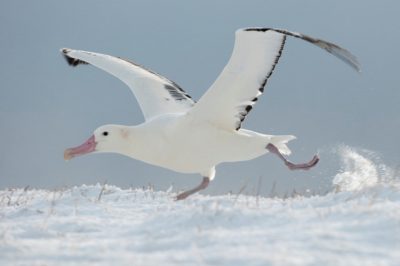Take-off
PDFMost small birds take off easily from a jump that gives them enough momentum to provide lift, but the energy required is still significant. In hummingbirds, for example, nearly 50% of the takeoff force is produced by the relaxation of the legs. However, some birds like swifts, whose jumping force is insufficient for allowing them to take off, must drop from a high point to take flight even if, contrary to what is said, they can do it thanks to a powerful wing strike.

For large birds taking off from hard ground is much more difficult. Some of the largest birds, such as vultures and bustards, do not have enough induced power to take off directly. Unless there is a strong headwind, they either have to jump off a cliff or tree, or must run for about 20 meters before taking off, which is what great albatrosses do when they leave their nest.
It is probably the frigatebirds which have the most complicated flight. With their two-meter wingspan and tiny legs that do not allow them to run, swim or jump, these birds are unable to hang from the ground or the sea, so they must nest on a high point (bushes) from which they drop to take off.
On the other hand, some groups such as the gallinaceous (partridges and pheasants) for example, whose wing loading is high but aspect ratio much lower, have a costly flight, but their very high muscular mass, up to 30% of their body mass, against 7 to 20% for the loons, allows them to fly away immediately, almost vertically. The implementation of a flight jump based on four legs as practiced by the large pterosaurs was certainly a factor which favoured their gigantism.
Notes & References
Cover image. Duck takeoff [Source: © Mathew Schwartz, CC BY 3.0, via Wikimedia Commons]




